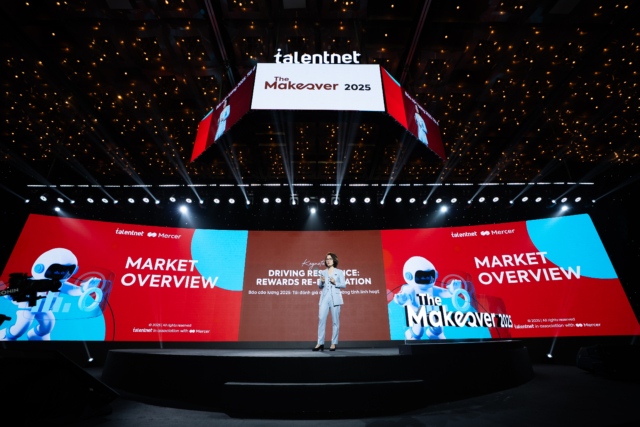Leading Through Uncertain Times: Proven Frameworks For Crisis Leadership

Aug 11, 2025
Last updated on Aug 11, 2025
For leaders, economic uncertainty brings intense pressure from all sides. Customers slow their spending. Teams feel distracted by the news. Stakeholders demand stability. You must make difficult decisions with limited resources. This pressure creates anxious and unsettled teams. Worries about job security can destroy morale and productivity. The mental toll is huge—research shows that during economic downturns, employee anxiety rises sharply. This leads to less focus, higher turnover plans, and reduced innovation. Navigating this turbulent environment requires more than just random advice. It demands proven, actionable systems that provide structure, clarity, and a clear path forward.

Key takeaways
- Economic uncertainty needs structured systems, not random advice—leaders need proven methods like EOS and crisis models to stay focused during tough times
- The best crisis leadership shields teams from outside chaos while connecting daily work to long-term goals and purpose
- Success means picking the right system for your needs—whether building accountability through EOS, developing crisis skills, or using servant leadership to boost team strength
- Companies that use systematic approaches to uncertainty turn crisis management into competitive edge, coming out stronger while competitors struggle with reactive choices
Leading through uncertain times is one of the toughest challenges any executive will face. The pressure to cut costs while managing anxious teams and making high-stakes decisions with incomplete information creates an environment where even seasoned leaders can feel overwhelmed.
However, these challenging periods also create key opportunities to build strength, sharpen focus, and emerge stronger than competitors who lack systematic approaches to crisis leadership.
The EOS (Entrepreneurial Operating System) framework
While many leaders scramble for solutions during economic downturns, the EOS framework offers a tested roadmap that has helped thousands of companies maintain focus and drive results when everything else feels uncertain.
Building structure through 3 core components
During economic volatility, teams desperately need structure and clear priorities to cut through the noise. The EOS framework provides exactly this—a complete system that keeps leadership teams aligned and accountable when outside conditions feel chaotic.
The Vision/Traction Organizer serves as your strategic anchor during turbulent times. This single-page document captures your company’s:
- Core values that guide decision-making
- 10-year target for long-term direction
- Three-year picture for medium-term goals
- One-year plan for immediate focus
It creates clarity about what stays constant even when market conditions shift rapidly. When teams understand both where the company is heading and how their daily work helps reach these larger goals, they can make better decisions on their own and stay focused despite outside distractions.
Quarterly Rocks turn long-term vision into immediate, actionable priorities. Rather than getting overwhelmed by everything that needs attention during a crisis, Rocks force leadership teams to identify the three to seven most critical goals for the next 90 days.
This laser focus prevents the paralysis that often comes with economic uncertainty. It ensures teams channel their energy toward high-impact activities that move the business forward.
The Scorecard component provides data-driven decision making when gut instincts may be clouded by stress and uncertainty. By tracking five to fifteen leading indicators weekly, leadership teams can spot problems early and adjust course before issues compound.
Key metrics to track include:
- Weekly qualified leads to stay ahead of sales slumps
- Days of cash on hand for financial readiness
- Customer retention rates to catch operational risks early
- Employee engagement scores to monitor team morale
Getting started with EOS
Implementation requires discipline and consistency:
- Create your Vision/Traction Organizer and share it company-wide so everyone understands the strategic direction
- Schedule quarterly meetings to review progress on current Rocks and set new priorities based on changing conditions
- Implement real-time dashboards that make key metrics visible to relevant team members
- Hold weekly leadership meetings focused on scorecard review and issue resolution
The crisis leadership competency framework
Smart leaders know that economic uncertainty demands a different skill set than normal operations—this framework maps the exact capabilities needed to navigate each phase of a downturn effectively.
Economic uncertainty tests every aspect of leadership capability, demanding skills that may have been less critical during stable periods. This framework identifies four core skills that can be systematically developed and used throughout different phases of a crisis.
1. Communication becomes absolutely critical when teams are anxious and information is rapidly changing. Effective crisis leadership communication goes beyond periodic updates—it requires establishing regular, transparent dialogue that addresses both business realities and employee concerns.
Leaders must share what they know while acknowledging uncertainty, provide context for difficult decisions, and maintain credibility even when delivering challenging news. The goal is to prevent information gaps that get filled with rumors and speculation, which can be more damaging than difficult truths.
2. Trust-building takes on heightened importance when job security feels threatened and organizational changes are frequent. Leaders must show genuine care for employee wellbeing while maintaining performance standards. This means actively listening to concerns with empathy, responding to team member needs when possible, and following through on commitments consistently. When leaders show consistency between their words and actions during crisis periods, they build the importance of trust in workplace culture necessary for teams to remain engaged and productive.
3. Creativity becomes essential as traditional approaches may no longer work in changed economic conditions. Leaders must encourage innovative thinking and create space for experimentation, even when resources are constrained. This might involve challenging long-held assumptions about how work gets done, exploring new revenue streams, or finding novel ways to deliver value to customers. The key is balancing creative exploration with practical constraints, ensuring new ideas can be implemented effectively.
4. Expertise involves leveraging both data and domain knowledge to make informed decisions under pressure. During uncertain times, leaders must combine information from multiple sources, distinguish between temporary disruptions and permanent shifts, and make strategic choices with incomplete information. This requires understanding both quantitative metrics and qualitative indicators, drawing insights from past experiences while remaining open to new patterns and trends.

The three-barrier crisis leadership model
This practical approach recognizes that leaders cannot control outside economic conditions but can create protective barriers that shield their teams from chaos while maintaining high performance levels.
Barrier 1: Keep the mission central by using strategic filters to evaluate opportunities and requests. When everything feels urgent during a crisis, having clear criteria for what aligns with your core mission becomes invaluable.
This barrier helps teams:
- Say no to distractions that drain resources
- Say yes to activities that truly move the business forward
- Prevent scattered thinking when facing multiple initiatives
- Ensure resources stay concentrated on high-impact work
Barrier 2: Provide support buffers that address the human side of uncertainty. Economic stress affects people differently, and leaders must acknowledge these varied impacts while maintaining fairness and performance standards.
Support buffers include:
- Employee assistance programs for mental health support and counseling
- Flexible work arrangements to reduce personal stress and accommodate individual needs
- Clear communication about job security where possible to reduce anxiety
- Resources for managing uncertainty including stress management training and wellness programs
The goal is not to eliminate all discomfort but to provide tools and support that help people navigate challenges more effectively—a key aspect of motivating employees during recession. Understanding empathy in workplace dynamics becomes crucial when supporting diverse team members through economic stress.
Barrier 3: Foster adaptability by building capabilities that help teams respond quickly to changing conditions. This includes training in change management principles, scenario planning exercises that prepare teams for different possible futures, and establishing rapid learning cycles that capture insights from both successes and failures.
When teams become comfortable with uncertainty and skilled at adapting quickly, they can turn volatility into competitive advantage.
Implementation steps:
- Identify “non-negotiable” mission elements that will anchor difficult decisions during turbulent periods
- Establish comprehensive employee assistance programs and peer-support groups for multiple help pathways
- Run after-action reviews following market shifts to capture lessons learned and build institutional knowledge
Transformational and servant leadership models
Research consistently shows that certain leadership approaches create significantly higher employee engagement and retention during difficult periods—making them essential tools for motivating employees during recession.
Two high-impact leadership styles:
- Transformational leadership works by inspiring teams through clear connections between daily work and long-term vision. During uncertain times, people need to understand not just what they should do but why it matters for the organization’s future. Transformational leaders excel at painting compelling pictures of what’s possible beyond the current crisis, celebrating innovative thinking that challenges conventional approaches, and maintaining optimism while acknowledging real challenges. This style helps teams see uncertainty as opportunity for growth rather than just survival.
- Servant leadership builds deep trust and loyalty by prioritizing employee wellbeing and empowerment. Servant leaders focus on removing obstacles that prevent their teams from doing their best work. They consistently provide resources and support needed for success, create environments where people feel valued and heard, and demonstrate that the organization cares about people, not just productivity. During economic uncertainty, when team members may feel vulnerable or expendable, servant leadership shows genuine investment in employee development and growth.
Both styles require authentic implementation to be effective. For transformational leadership, the focus should be on regularly communicating the “why” behind strategic changes, helping team members understand how current challenges fit into organizational growth. Leaders should create forums for sharing innovative ideas and creative solutions, celebrating examples of problem-solving even when experiments don’t immediately succeed.
For servant leadership, success comes from establishing clear mechanisms for upward feedback through listening sessions and surveys. Conducting skip-level meetings provides direct insight into team member experiences, while publicly rewarding examples of both innovation and empathy reinforces that both performance and people matter equally. The key is demonstrating consistent care for employee development while maintaining high performance standards—particularly important when managing multigenerational workforce challenges during uncertain times.
Choosing the right framework for your business
Rather than offering scattered best practices, these frameworks help you architect a systematic response to economic uncertainty. The most effective approach depends on your organization’s immediate needs, current capabilities, and the specific challenges you’re facing.
| Framework/Model | Best For | What You Get | Key Actions |
| EOS | Teams lacking structure & accountability | Clear priorities and metrics | V/TO creation, quarterly rocks, scorecards |
| Crisis Leadership Competency | Leaders needing crisis skills | Developed leadership capabilities | Communication training, trust-building exercises |
| Three-Barrier Model | Organizations facing external chaos | Protected team focus | Mission filters, support systems, adaptability training |
| Transformational/Servant | Low morale and engagement | Rebuilt trust and purpose | Vision communication, feedback channels |
Economic uncertainty creates immense pressure that impacts both business stability and team morale, but structured frameworks provide the roadmap for turning these challenges into competitive advantages.
While random advice offers temporary relief, systematic approaches like EOS create lasting accountability, crisis leadership skills map abilities to specific challenges, and protective barrier models shield teams while maintaining focus.
Leadership styles such as transformational and servant approaches prove especially effective at building the trust and resilience necessary for sustained success during volatile periods. When organizations implement these frameworks systematically, they transform crisis management from reactive scrambling into proactive advantage-building that positions them to emerge stronger than competitors who lack structured approaches to leading through uncertain times.
For organizations seeking additional support in implementing these frameworks, professional HR consulting services can provide specialized expertise in crisis leadership development and organizational resilience building.
Frameworks move you from reacting to uncertainty to proactively shaping your future, but a framework is only as good as the vision that drives it. If you are ready to turn theory into action and set a clear course forward, then it’s time to think bigger.
The Makeover 2025: SAILING AHEAD is a call to action for leaders who want to master uncertainty and build resilient, forward-thinking organizations.
At The Makeover 2025, you will:
- Set your course forward by moving beyond strategy talk to map out actionable growth
- Connect with global futurists and top Vietnamese leaders driving real transformation
- Experience blind-box formats with surprising ideas and energy-packed sessions that leave you inspired and ready to act
Join us to find clearer directions, bolder ideas, and the momentum to sail ahead.

Solve your HR problems!
6th Floor, Star Building, 33 Mac Dinh Chi, Saigon Ward, Ho Chi Minh city, Vietnam




